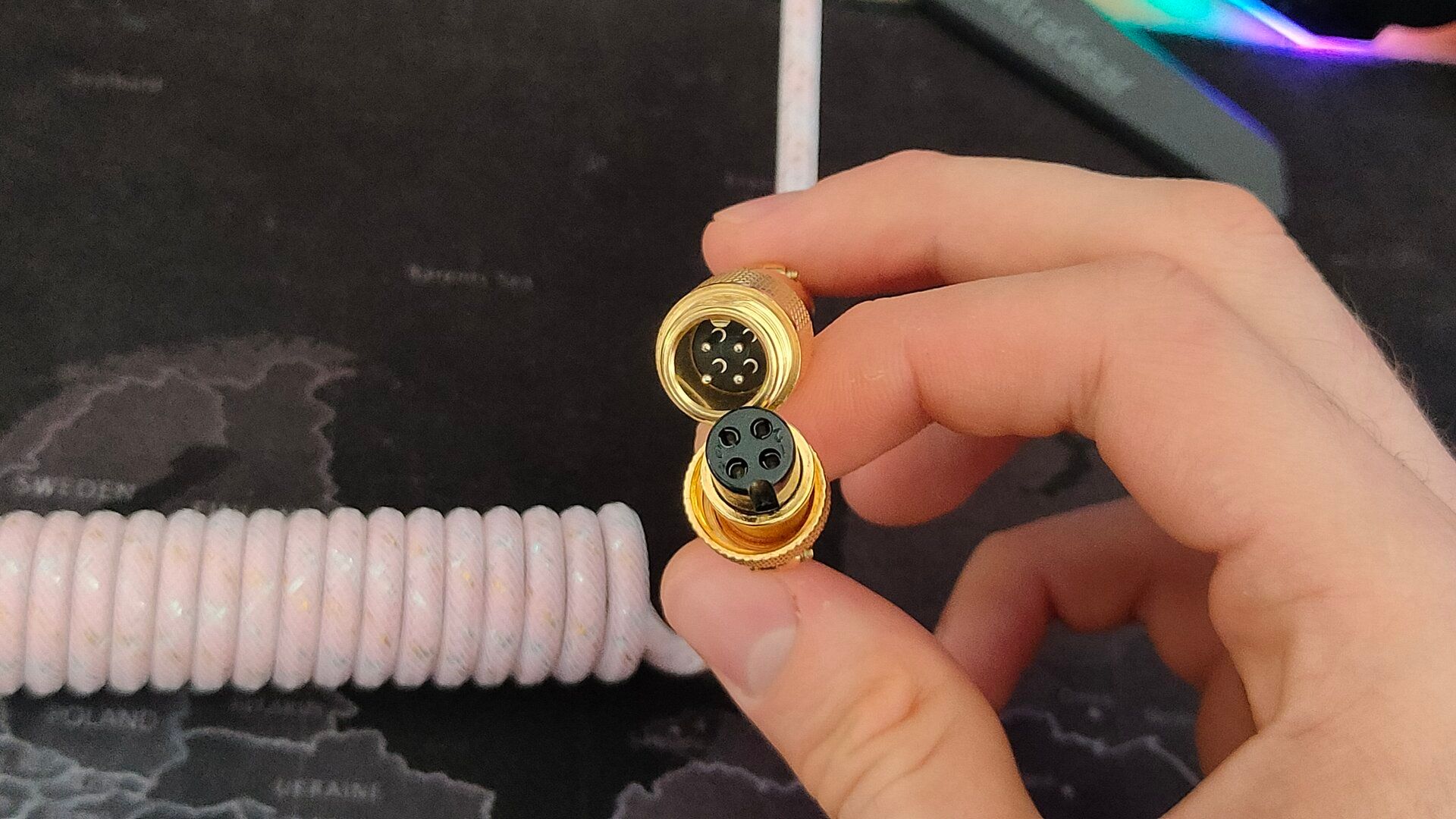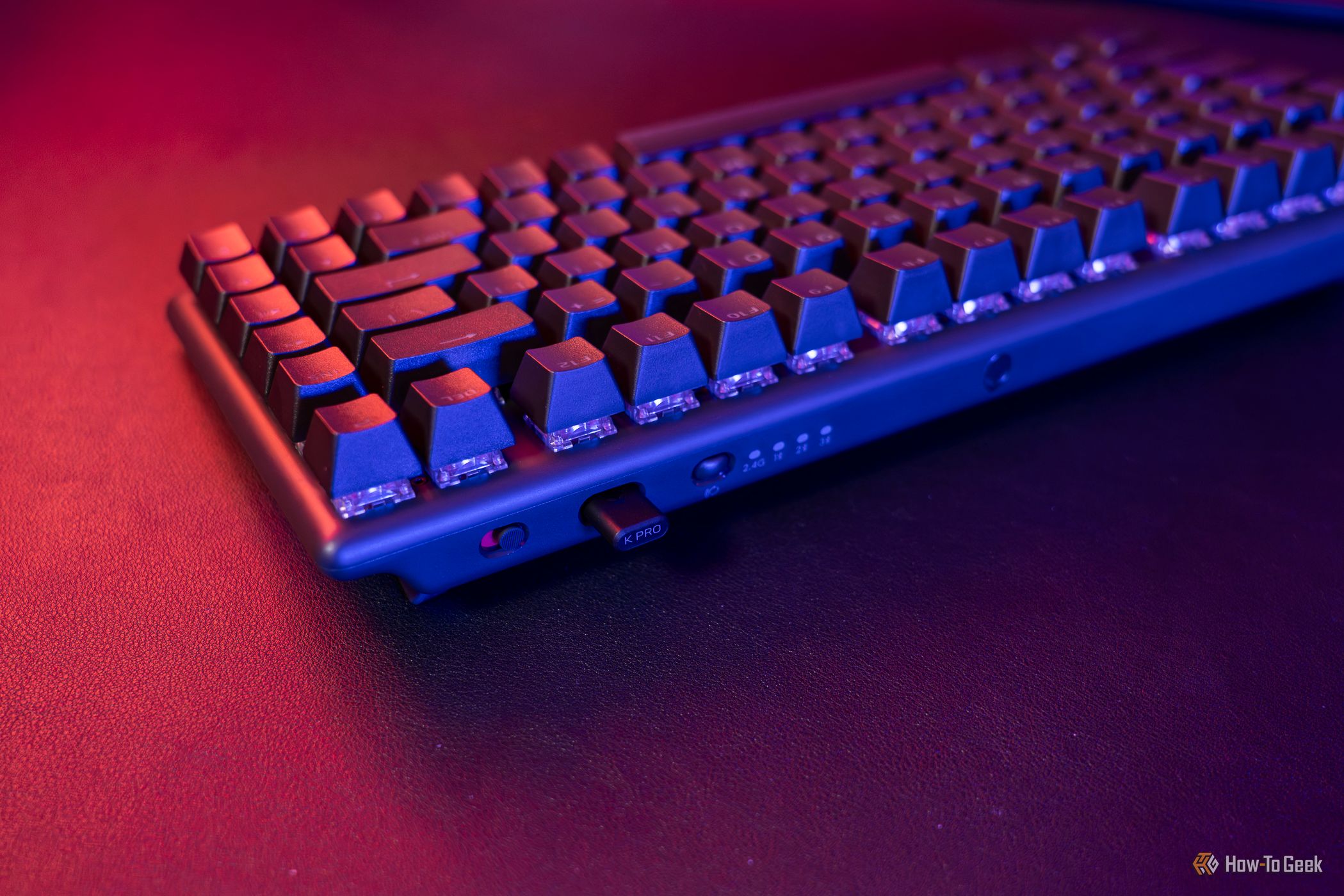Let’s be honest: unless you’re an enthusiast, you probably haven’t thought twice about the cable that came with your keyboard. But if you’ve ever fallen down the keyboard rabbit hole (guilty), you know that something as simple as a USB cable sparks joy.
5
Clean Desk Aesthetics
One of the main reasons we keyboard enthusiasts geek out over coiled cables is obvious—they just look great. Coiled cables harken back to days gone by, evoking nostalgia for old landline phones. They’re also featured prominently in vintage and modern gear alike, such as guitars, headphones, and professional audio equipment.
Unlike standard cables that often tangle and sprawl messily across your desk, a coiled cable offers a clean, organized aesthetic that enhances your workspace. While they occupy more space, coiled cables still bring structure and symmetry to your desk, drawing attention away from the inferior flat cables.
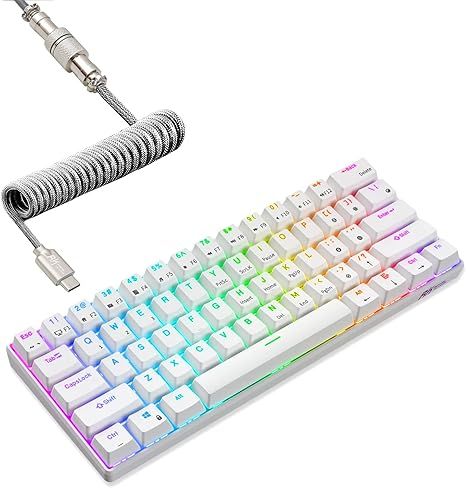
RK ROYAL KLUDGE RK61 60% Mechanical Keyboard
The RK ROYAL KLUDGE RK61 is a 60% mechanical keyboard with a coiled cable. It’s a compact, portable keyboard that can also be used wirelessly via 2.4GHz or Bluetooth. The keyboard features RGB backlighting and a hot-swappable PCB, making it easy to change switches.
Even if you prefer wireless keyboards, you can’t deny that coiled cables look pretty cool. Whether you prefer the cable being packed tightly or messy, flexed curls, or coiled cables, add a sense of style that straight cables just can’t compete with.
4
Easy Keyboard Swaps
Another major benefit of coiled keyboard cables is that they allow you to swap between keyboards more easily. Coiled cables actually consist of two separate parts: the coil that connects to your keyboard, and the USB cable that plugs into your PC. These parts are joined by a special connector, which is typically an aviator, but it can also be a LEMO, YC8, or other niche connector.
This setup allows for quick and easy keyboard swaps. The connector itself is far more durable than the delicate USB-C port on your keyboard, which can wear out after a few years of frequent use. Plus, it’s easier to replace a broken cable than to solder a new port, making coiled cables a smart choice for keyboard enthusiasts.
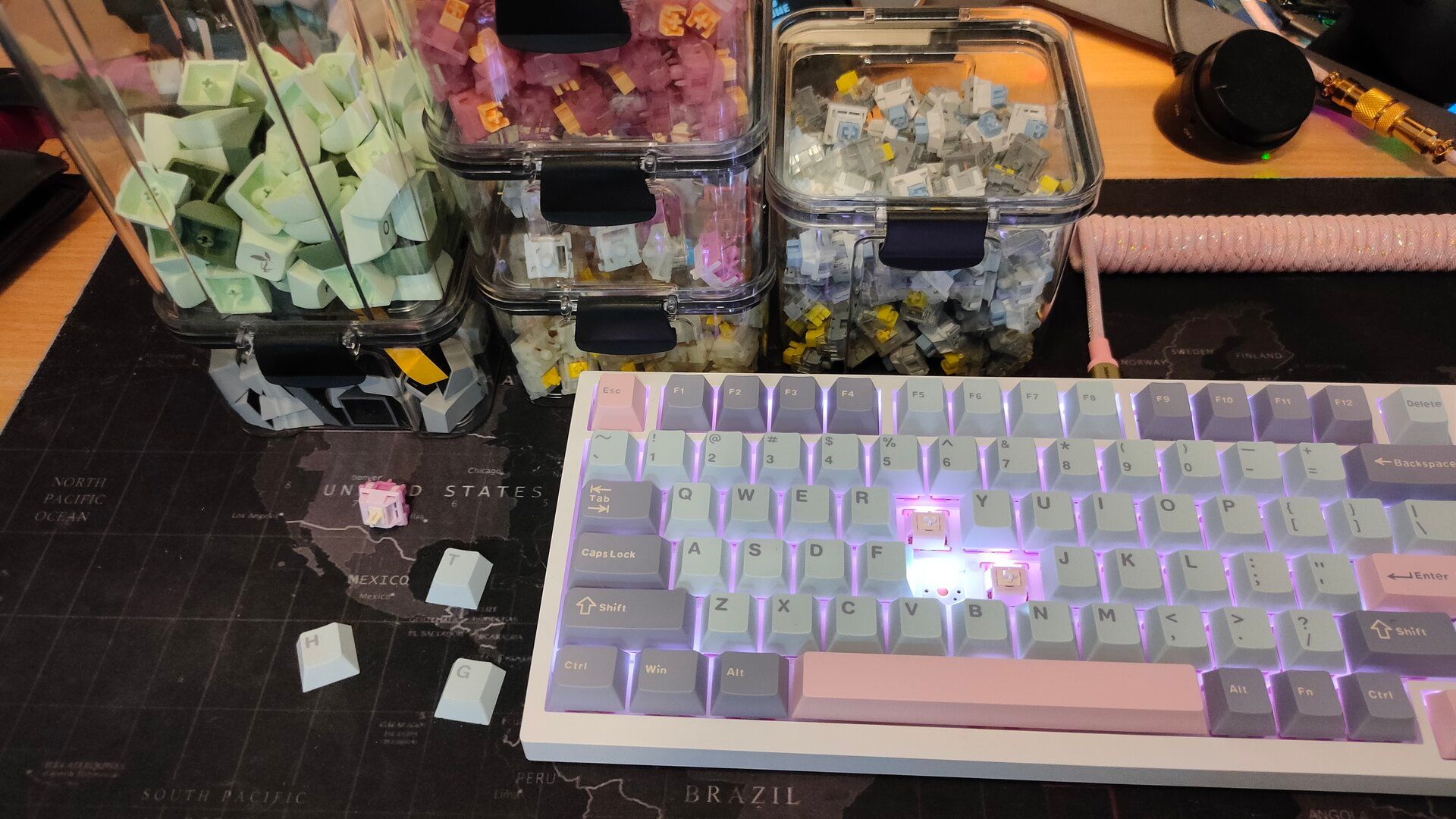
Related
Forget Collecting Keyboards, I’m Obsessed With Switches and Keycaps
Okay, maybe I’m just obsessed with collecting anything that clicks and clacks.
Granted, aviator connectors require you to unscrew a threaded sleeve each time you change keyboards, but it’s actually satisfying to use and part of the appeal. If you prefer a faster connector, you can always opt for push-pull LEMO or YC8 connectors.
If you’ve seen ads for magnetic USB cables, you might wonder why we don’t just use those instead. There are a few good reasons. As PCWorld explained in an article, magnetic USB-C cables can pose fire and electrical risks. They’re also more prone to data transfer losses and signal interference, making them rather unreliable.
3
Flexibility Without the Tangle
The traditional reasons why cables were coiled on things like landline phones were to provide lots of cable length without the tangle. As you walked further away from the phone base unit, the springy cord would stretch, letting you continue your conversation without interruption. The same idea works well with other mobile devices like guitars and headphones.
Keyboards usually stay put on the desk, but if you ever need to move it to your lap or the bed behind you, a coiled cable makes it possible without yanking at your setup. I have two wireless keyboards, but their wireless dongles typically aren’t plugged into my PC unless I’m actively using them wirelessly. Thanks to the coiled cable, I can quickly shift the keyboard around my desk or to my lap when I lean back.
That said, I only do this occasionally, since stretching the cable for too long can cause it to uncurl and lose its shape over time (which is completely fixable, by the way).
2
Customization Heaven
Coiled cables are a great way to add a pop of color to an otherwise muted desk setup. You can match your keycaps, go with a neutral black or white and a gold-plated connector, or choose a bold contrast that stands out. Whatever your preference, they’re a simple and affordable way to refresh your workspace’s look.
While they already look great out of the box, you can take customization even further with custom options from CableMod and other keyboard/cable retailers. If you’re a DIY enthusiast, try your hand at making your own coiled cable. You can choose the exact cable sleeving and connector style that suits your preferences.
1
They Just Look and Feel Premium
I’m a huge fan of high-end gadgets, but I was initially skeptical about coiled cables. I just couldn’t justify spending the kind of money you’d pay for a budget mechanical keyboard on what seemed like a simple USB-C cable, no matter how good it looked.
However, the moment I saw my first coiled cable in person, that hesitation turned into excitement. From the premium-feeling packaging to the gold-plated aviator connector and the glittery cable, I was pleasantly surprised. And the best part? It wasn’t even expensive—this ATTACK SHARK Custom Coiled USB Cable only cost me around $15 on sale.
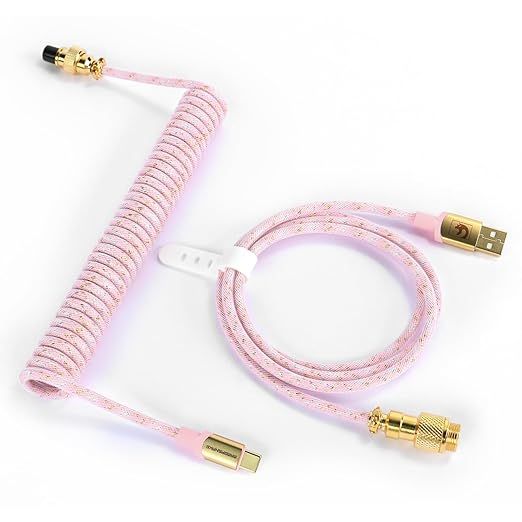
ATTACK SHARK Custom Coiled USB C to A Keyboard Cable
This custom ATTACK SHARK cable features a range of captivating colors that complement your keyboard. It also includes a gold-plated aviator connector, allowing you to quickly swap between keyboards. This budget-friendly coiled cable offers the quality and aesthetic appeal of much more expensive cables.
While not everyone may agree with me, I find coiled cables gorgeous and plan to build a collection of them. If you’re into the aesthetic, I say go for it—start with something cheap, and if you like it, you can upgrade later. You won’t regret it!


